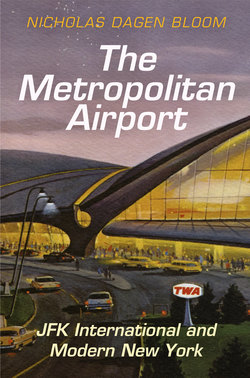Читать книгу The Metropolitan Airport - Nicholas Dagen Bloom - Страница 8
На сайте Литреса книга снята с продажи.
ОглавлениеPREFACE
Seven years’ residence in Kew Gardens, New York, inspired my interest in airport history. This quaint neighborhood, situated in the borough of Queens roughly equidistant between JFK International and LaGuardia Airports, is one of many points of contact between the aviation industry and ordinary urban life. Jets flew loud and low over the neighborhood on many cloudy, rainy nights, disturbing the peace in otherwise quiet streets. Kew Gardens also sheltered airline pilots and flight attendants in crowded “crash pad” apartments where they caught some sleep, partied, and collected their dry cleaning. Refreshed and rested, they waited in their pressed uniforms on Lefferts Boulevard for airport coaches to whisk them off to their next destinations.
The areas surrounding Kew Gardens progressively revealed additional airport influences. Our family trips to the Atlantic Ocean at nearby Long Beach were accompanied by an overhead parade of descending international flights on their way into JFK. On the way back from the beach, we spent a lot of time strategizing routes to avoid the chronic traffic jams on the Van Wyck Expressway—the primary highway link from JFK to Manhattan, Westchester County, and more distant points. Like many before us, we discovered that complicated alternative routes on local streets were even worse than the crawl of taxis, trucks, and shuttle buses on the Van Wyck.
A more satisfying experience, as a Long Island Rail Road commuter in those years, was watching firsthand the growing popularity of the new Air-Train system (2003) linking JFK to subways and commuter rail. Transit advocates were proved right that airline travelers would use a train to go from the city and surrounding suburbs to their terminals. Finally, as a frequent air traveler bound for both conferences and leisure, I was impressed by JFK’s new terminals, such as Terminal 4, but also concerned by the jerry-rigged system employees had created to funnel leaking ceiling water away from passengers at the decaying Pan Am (then Delta) terminal. Like most regular travelers at JFK, my family and I also endured our share of flight delays and inconveniences there.
The front seat that Kew Gardens and the surrounding region provided on JFK International—one of the world’s oldest and busiest international airports—provoked a number of reflections that coalesced into the single, broader question this book addresses: what has been, and what is today, the relationship and cumulative impact of such a large airport to a modern American metropolis? JFK International, as it turned out, provided a particularly good subject because this airport has been open and in the public eye for so long, is surrounded by dense urban and suburban neighborhoods, and has been the subject of so many previous studies and conflicts concerning airport impact in the fields of economics, the environment, traffic, and labor relations, to name a few. Those looking for an architectural history of the airport, a catalogue of airlines and operations, or a plan for future growth should look to other sources described in the notes. The Metropolitan Airport is a book for those who seek to understand the revolutionary impact that airports have had on the modern American metropolis.
The name John F. Kennedy International Airport, or JFK, is primarily used throughout the text to minimize confusion for readers, even though the airport was only renamed in memory of President John F. Kennedy in 1963. Idlewild Airport is, however, sometimes used in the text for the period from 1941 to 1963 (Chapters 1 and 2) in order to align with the public and media use of that name for the airport at the time. The official name of the airport from 1947 to 1963, according to the Port Authority, was New York International Airport, a name rarely used by anyone but Port Authority administrators. The term Port Authority is primarily used for brevity to refer to the Port Authority of New York and New Jersey (PANYNJ). The bi-state agency (cooperatively run by New York and New Jersey) was established in 1921 as the Port Authority of New York and renamed in 1972 as the Port Authority of New York and New Jersey.
